The importance of customer satisfaction
Customer satisfaction – back in the days it was called:
“The customer is king.”
It sounds a bit old-fashioned, but it is also the path to long-term business success for modern companies.
The emphasis is on the long term. After all, it’s perfectly possible to generate quick sales with attractive prices or unique products.
However, customer satisfaction is crucial for long-term customer loyalty. Loyal customers have many advantages:
- They can be motivated to buy with much less marketing effort
- They tend to buy again of their own accord
- They are more likely to recommend the company to others
- They are willing to pay higher prices
A drop in customer satisfaction is a clear warning signal. If you regularly measure customer satisfaction, you will quickly notice a negative trend.
This is the only way to have enough time to take countermeasures. In the age of easy comparisons (high market transparency), loyalty is low and it’s easy to switch providers.
And in the age of social media, word gets around quickly when many customers are dissatisfied. You should be aware of this before a shitstorm breaks out.
Before measurement: Set goals
Before you start setting up a questionnaire or measuring anything, think about what the goal should be.
Too often it happens that you just go for it. That’s a shame, because the better you know what you want to achieve, the better metrics you’ll choose to measure, and the more meaningful and usable the measurement will be.
In other words, ask yourself:
- Why exactly are we measuring customer satisfaction?
- Is it about the company as a whole or about specific products?
- Do we only want to measure customer satisfaction or also other parameters/measurements?
- How often do we want to measure?
- Who should receive/understand the evaluation of the key figures?
- What follows from the measured key figures? What happens if the satisfaction decreases? What if it increases?
Only when you have answers to these questions should you determine how to proceed.

Meaningful measurement means comparison
One very important point: measuring customer satisfaction is only useful if you can interpret the values obtained.
And that is only possible with a basis for classifying the figures. In other words, measuring only makes sense if you have a basis for comparison. The easiest way to get this is to either:
- Compare the satisfaction of your company with competitors
or - Survey your company’s satisfaction over time.
Therefore, always be aware that a single measurement without the possibility of comparison is of little use.
How do I measure customer satisfaction?
Essentially, there are two different ways to elicit customer satisfaction:
- Quantitative methods: surveys
- Qualitative methods: Focus groups, in-depth interviews, telephone interviews, product tests such as product clinics.
A questionnaire or survey is the obvious way and the first one most people think of. It is direct, often less costly than other methods, established and has the advantage that at the end there is a numerical value that can be compared nicely.
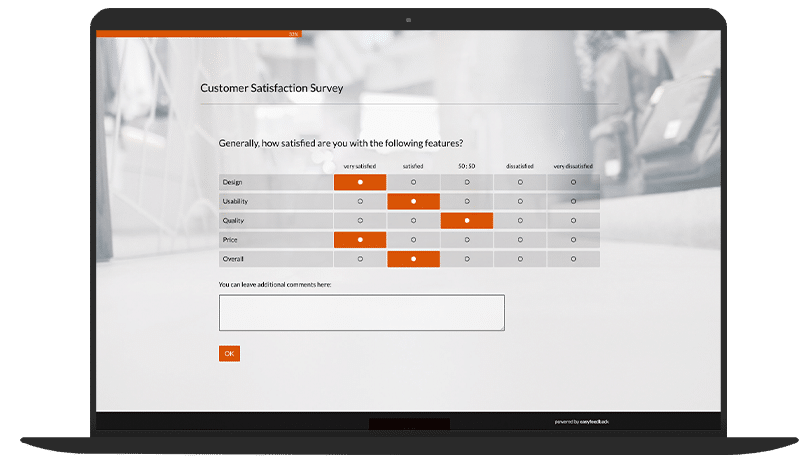
In general, you get statistically validated data with quantitative methods. With qualitative methods, on the other hand, you are more likely to find out motivations, attitudes and behaviors.
The problems with surveys
However, we must not conceal the fact that simply asking customers is not without its problems. After all, every survey has a few fundamental problems that are in the nature of things: The results are not as objective as you might think.
Social scientists have been studying this for decades – we won’t go into it here. Just know that there are phenomena that distort the answers:
- Social desirability phenomenon.
This means that respondents tend to answer what they believe is viewed positively by society. For example, if the topic is climate protection, many people answer that they would personally pay a lot of attention to saving energy.
But if you look at the figures for energy consumption or CO2 emissions, you realize that apparently not as many people are as environmentally conscious as they pretend to be.
And this doesn’t even have to be deliberate cheating – all of us are subject to such phenomena, even if we are aware of them.
- Our memory is not as good as we think.
It is not a storehouse of knowledge that we can simply tap into. Rather, we often don’t remember things correctly, gloss over things when we are positive about them, or exaggerate problems when we are negative about the topic at hand.
- Finally, there are the strategic responses.
If you ask one of your customers if he would be willing to pay more for your product, he will probably answer “no”.
After all, he doesn’t want you to raise your prices.
Because of all these limitations, it is so important not to measure customer satisfaction only once. Because these effects distort the measurement, but they are largely present to the same extent in every measurement.
And thus, the effect balances out, a comparison of the values from several surveys is therefore quite possible.
Alternatives to the customer survey
Because of the limitations just mentioned, there are alternatives to the survey. However, these alternatives normally do not provide quantitative values, i.e. numbers, but only qualitative results. With the alternatives you get rather single stories and opinions. These are very interesting, but not a key figure that can be easily compared.
- In focus groups, you discuss your company or product with five to eight people. In the process, you learn a lot about your customers’ opinions and perceptions. And also about your competitors.
- In in-depth interviews, you talk to individuals and, as the name suggests, go in depth.
- In the telephone interview, you stay a little more on the surface, here you usually mainly collect evaluations and the conversation is rather shorter.
- In the Product Clinic method, you conduct a product test. You let the test persons try out your product and talk to them about their experiences.
In the following, however, we’ll stick with surveys, which are used to get customer satisfaction out as a metric – so we have a metric at the end.
In the vast majority of cases, these are now conducted as online surveys, because it’s so much faster and cheaper than interviewing people by phone or in person.
Who do I interview? – Finding participants for surveys
The quality of any survey stands and falls with the participants. The rule of thumb is:
The more people participate, the more reliable the figures will be.
Obviously it’s best, if you just ask everyone. That’s possible with employee surveys, but it’s usually not possible with customer surveys.
That’s why you usually only ask a random sample. Ideally, the sample is representative – that is, the group of respondents contains the same number from all groups of people as there are in the total group.
This is quite costly to achieve, so in practice you will usually just work with a random sample for customer satisfaction.
That’s fine, just keep in mind that it will skew the results. Thus, it’s best to only compare values that you’ve obtained in the same way. The basic question in any survey is: How do I reach the participants?
Common ways are:
- Website or app
- Newsletter
- Letter to existing customers (mail or letter)
- By telephone
- In person, e.g. at a trade fair (questionnaire or tablet/POI terminal), in the waiting room or in the store.
- Street survey
- Representative survey by market research institute
The last two methods are only suitable for large, well-known companies – because when it comes to customer satisfaction, you need existing customers, and you’ll only find them on the street at the really big companies.
For a representative survey of the German population, you need at least 1,000 participants. Surveys of this kind are correspondingly expensive. But if you just want to get a picture of the mood, you can already identify initial trends with around 50 participants.
As I said, the more people you interview, the more reliable the figures will be – for details, you will have to delve a bit into statistics and deal with significance, for example.
When do I survey – the right time for the customer survey?
What you sometimes forget in your zeal: You can only measure customer satisfaction with customers. Whenever you target participants on the website or in your app, you’ll mostly also get non-customers.
That’s not a problem in itself, it’s just that you have to exclude them from the determination of the respective metric for measuring customer satisfaction. Also, don’t forget that the timing of when you ask the satisfaction question plays a big role:
- If you ask about satisfaction after the purchase of a product, then you certainly won’t get too bad a score – otherwise the person in question wouldn’t have bought anything.
- If, on the other hand, you ask about a complaint, then the score will certainly not look so good – even if the complaint was handled well, complaining is no fun for anyone.
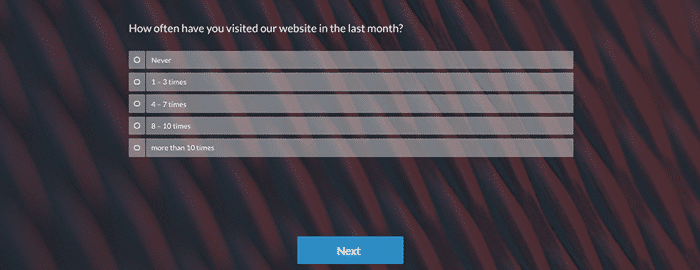
In order not to distort the results, you should only ever compare the figures that were determined in the same situation. Or you can make an even mix of numbers, i.e. determine average values from different situations.
Recommended metrics for measuring customer satisfaction
Now finally to the numbers: which metrics are best suited for your purpose?
There is no simple answer, because as always it depends on what exactly you want to measure, who should interpret the numbers and with which numbers you want to compare the results.
- The CSAT is most common for customer satisfaction and if there are no other specifications, I would personally take that.
- In favor of the NPS is that it is already used in many companies and many colleagues know it, especially those from marketing.
- CES and TGW are less common, but definitely interesting when it comes to more complex processes or service quality.
Interestingly, the results of all metrics correlate quite strongly anyway – that is, it is not so decisive which metric you choose in the end.
Customer Satisfaction Score (CSAT)
The best-known score is the Customer Satisfaction Score (CSAT). Here you ask your customers the question:
How satisfied are you with product X?
Depending on what you want to measure, you can ask about a specific product, customer service or the company as a whole.
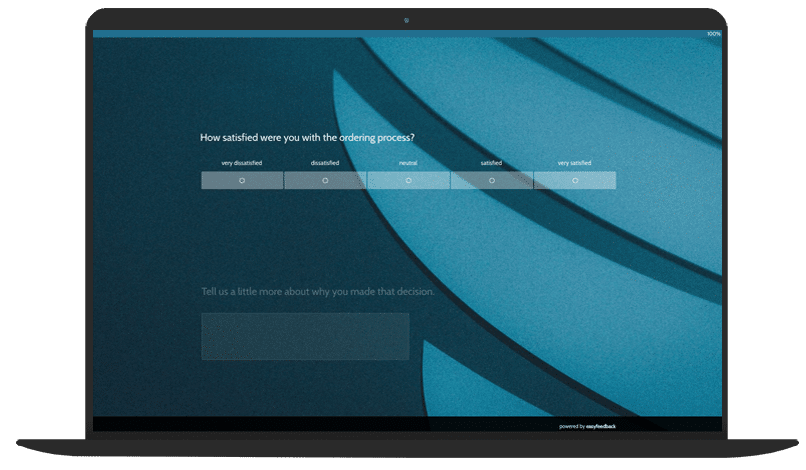
You give a scale with values from 1 to 5 as possible answers:
- Very dissatisfied
- Dissatisfied
- Partly dissatisfied, partly satisfied
- Satisfied
- Very satisfied
Some also work with a scale from 1 to 7, a few with 1 to 10 or even only from 1 to 3. You calculate the value of the CSAT by determining the percentage of people who answered with 4 or 5.
So, for example, if you asked 100 people and 53 said they were satisfied or very satisfied with you, then the CSAT is 53 % (53 responses of satisfied/very satisfied divided by 100 participants, expressed as a percentage).
The average CSAT varies quite a bit by industry. For manufacturing (i.e., electronics, consumer goods, etc.) it is 80 %, for finance it is 78 %, for retail it is 77 %, and for public administration it is 68 %.
Net Promoter Score (NPS)
The Net Promoter Score (NPS) is also quite common.
You also determine the NPS by asking a single question:
“How likely are you to recommend product X to a friend or colleague?”
The answer options consist of a scale from 0 (unlikely) to 10 (extremely likely).
Those who answer 10 or 9 are counted as promoters (supporters). Those who indicate 6 or worse are detractors (critics). The value of the NPS is calculated from the proportion of promoters minus that of detractors.
The value therefore lies between -100 and 100%. Average NPS values are 61 in the manufacturing sector, 50 in the financial sector, 48 in consumer goods and 52 in public administration.

Customer Effort Score (CES)
Somewhat newer and less well known is the Customer Effort Score (CES). It measures how high customers perceived the effort to do business with you.
The question to ask is:
“How easy or difficult was it for you to solve the task?”
This can be phrased even more concretely like “solving your problem” if you ask the question after contacting your support, for example. Or “to complete the purchase” if the question is about your web store, for example.
The answer options are:
- very difficult
- difficult
- neither
- easy
- very easy
For the evaluation, you normally simply calculate the average score.
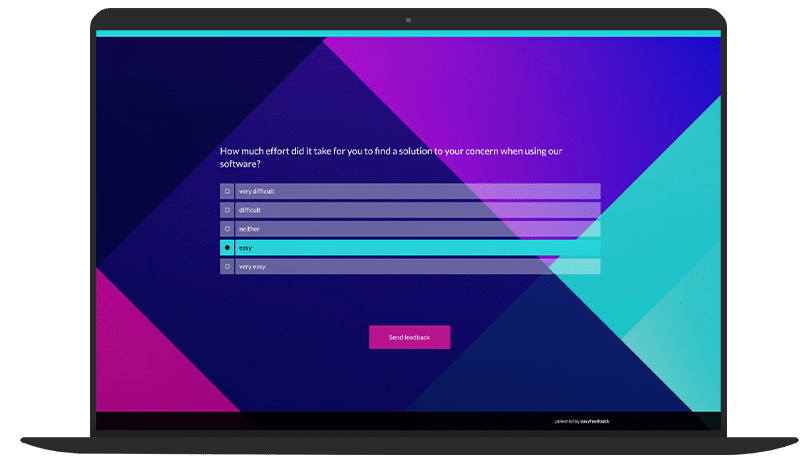
Things Gone Wrong (TGW)
The last metric is a bit more unknown. But it has the charm that you don’t even have to do a survey for this one. Things Gone Wrong (TGW) is simply the percentage of customer interactions where something went wrong.
So, for example, the proportion of complaints to total orders. Or the proportion of buyers who contact support. TGW is usually expressed as x in 1,000 or x in 1 million.
Don’t give away valuable information
With any survey, don’t give away the opportunity if you’ve already had a chance to “talk” to your customers.
Be sure to always ask an open-ended question after the metric has been collected. Ask customers in a free text field to very briefly state the reason for their particular score.
This will give you highly valuable info on potential problems – but also on things your customers like.
Which tool do I use to measure customer satisfaction?
In terms of technology, customer satisfaction measurement is nothing complex. You ultimately just need a tool that embeds a simple survey into your website. You then get access to a descriptive analysis of the data.
Pay attention to the following, among other things:
- Are the data protection guidelines fulfilled (DSGVO)?
- Is the technical integration with your website easy?
- Can you start immediately because there are questionnaire templates?
- Can you adapt the appearance of the survey to your design guidelines?
- Is the questionnaire free of advertising?
- Can you reach all evaluation options or representations you need?
- Is the provider also permanently available, so that you can carry out comparable follow-up surveys with little effort?
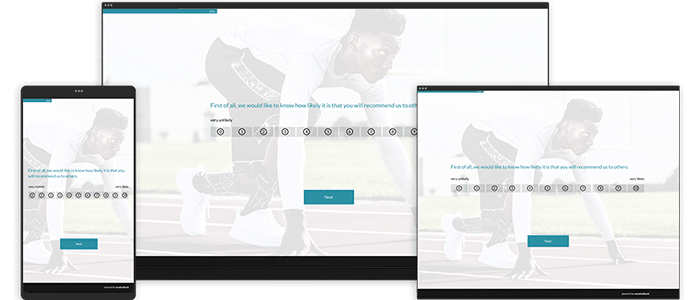
Conclusion: Those who measure win
Anyone who wants to ensure the success of their company should know how satisfied their customers are. This is the only way to secure or even expand market share. As part of the systematic optimization of the customer experience (CX), it’s hard to do without such metrics today.
If satisfaction is declining, I should be aware of it before a shitstorm starts. Likewise, if the competition takes the butter off my bread. Or if digital disruption makes my business model obsolete.
It’s better to measure it yourself and have the opportunity to take countermeasures in good time.
Quality management even prescribes customer satisfaction measurement. Based on this, improvements are required according to the CIP (Continuous Improvement Process).
And that should always be your goal: To continuously improve the entire customer experience and thus advance the company. This is reflected in steadily improving customer satisfaction scores – making measurement more and more fun.
More about Customer Experience:
- 8 methods for analyzing customer satisfaction
- How to prioritize customer satisfaction measures
- 8 (atypical) measures to improve customer satisfaction
- Proving customer satisfaction with key performance indicators
- 8 reasons why increasing customer satisfaction doesn’t work!
- Everything you need to know about customer satisfaction




